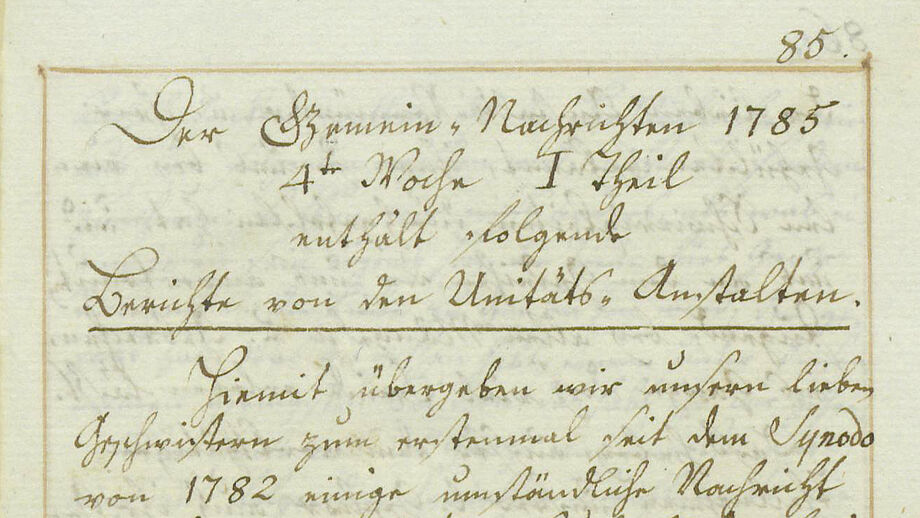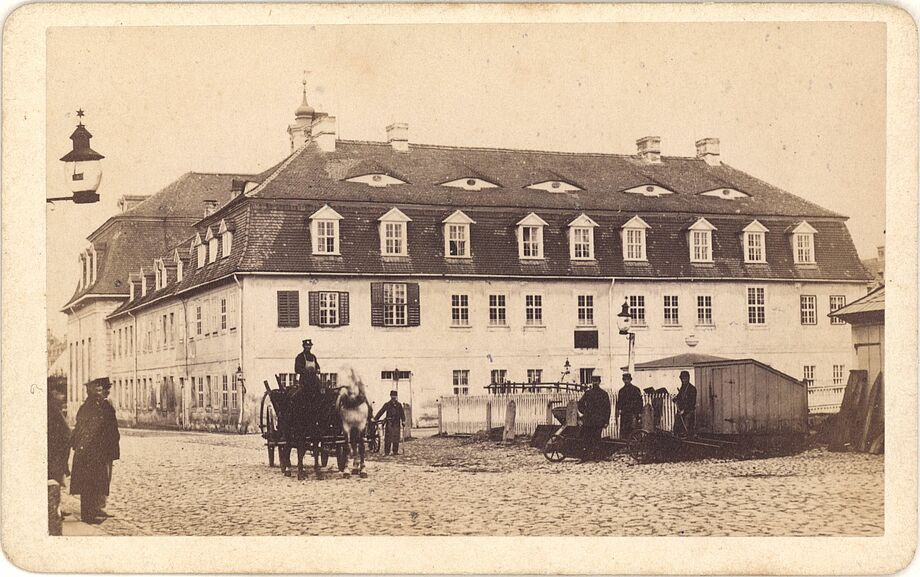Development of the Herrnhut knowledge archives
The texts of the Moravian Church contain an impressive wealth of research treasures. Within the framework of the Moravian Knowledge Network, the documents have been digitally recovered and made available to researchers and the interested public. SLUB Dresden has been an active partner of this network from the beginning.
The Moravian Church was founded at the beginning of the 18th century. Within a few decades, the faith community spread throughout the world. This process was meticulously documented and published by the community in countless reports, letters, diaries and biographies. Even today, these texts still shape the European view of the world.
The Moravian Knowledge Network has set itself the task of making the documents accessible as full texts and researching them digitally. The SLUB Dresden contributes to this collaboratively with its own fundamental contributions. Three examples are presented below.

The forerunners of the news from the Brüder-Gemeine were the Gmein-Nachrichten, which were published in handwritten form. This publication is currently being digitised by the State Digitisation Programme of the Free State of Saxony and the Unitätsarchiv Herrnhut and made available to the public via the SACHSEN.digital portal. For this purpose, citizens, students, researchers and computers are coming together in an exciting cooperation. Together they are digitising the historical source material from the Unity Archive and evaluating it under the professional guidance of experts from the SLUB TextLab. The funds for this come from the State Digitisation Programme of the Free State of Saxony.
But how do you transform texts in German Kurrent script - the general circulation script of the modern era in German-speaking countries until the middle of the 20th century - into digital full texts? The citizen scientists meet regularly to discuss and correct the transcriptions of the Gemein-Nachrichten they have made at home. Beforehand, they had to learn to read the Kurrent script and agree in detail on which observations on the text should be recorded beyond typing the letters. In doing so, they were also able to draw on transcriptions that students and researchers at the Chair of German Linguistics and Language History at the Institute of German Studies at the TU Dresden had previously created. Using these texts, sophisticated computer programmes are now being trained so that they are able to create such transcriptions themselves. In this way, it is now possible to make the entire full text of this journal accessible for research.
Excursion diary Barby (1766)
Digital full-text indexing can also really go into depth. For example, the excursion diary of a member of the Moravian Brethren Society, written in 1766, describes an excursion lasting several days in the area around Barby (today a small town in the Salzland district in Saxony-Anhalt) and the plants observed there. Researchers at the Institute of Botany at the TU Dresden and Thomas Ruhland (University of Halle-Wittenberg) have first processed the text for an edition, and are now marking it digitally (according to the TEI guidelines). In doing so, they not only record graphically conspicuous things, such as corrections, but also make plant and place names recognisable as such and link them to Wikidata. In this way, the text is transformed into a database that allows a systematic insight into the described historical flora.
How to use our service
Simply book an appointment via the SLUB Wissensbar if you have questions about Digital Humanities. Our staff will then sit down with you for about 30 minutes.
Feel free to contact us!
textlab@slub-dresden.de
For individual concerns and enquiries, please contact our subject specialist Dr Juan Garcés.

